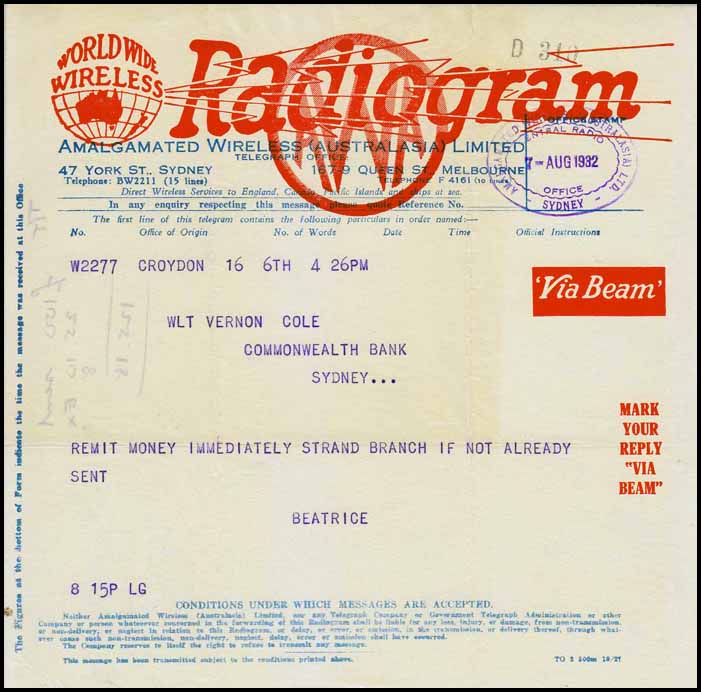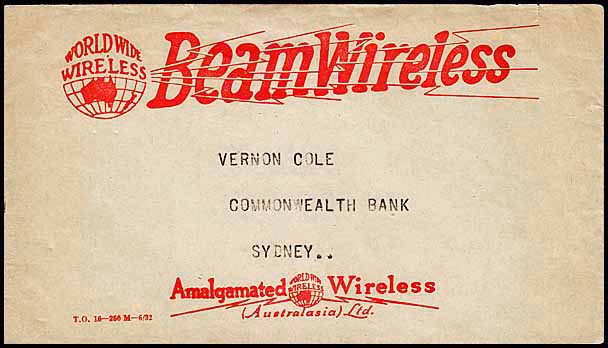Radiogram delivery form: IAA-DR-1.
- Home, index, site details
- Australia 1901-1988
- New South Wales
- Queensland
- South Australia
- Tasmania
- Victoria
- Western Australia
- International
- Special aspects
| Heading and notes: | Form No. TO 3. Heading is RADIOGRAM. |
| Message area: | Blank. |
| Reverse side: | Blank. |
| Colours (text & form): | Red and blue on cream. |
| Size of form overall: | 210 × 213 mm. |
- has log incorporating WORLDWIDE WIRELESS;
- clearly marked VIA BEAM;
- MARK YOUR REPLY .. at the right.
Every wireless-equipped ship was a floating telegraph office, and formed part of the world's telegraphic system. Wireless messages could be handed in on board for delivery to an addressee in any part of the world. Likewise a message could be handed in to the A.W.A. Central Radio Office in Sydney or Melbourne or to any telegraph office in Australia, for transmission to a ship at sea.
The first messages received using the Beam were delivered on forms headed RADIOGRAM with the message VIA BEAM added prominently in a reverse printed red box at the right.
 Printed in October 1927. |
IAB-DR-1. Croydon, UK to Sydney Has Sydney Central Radio oval date stamp. Characteristics:
Message begins WLT (Weekend Letter Telegram).
As the Beam only commenced commercial operations in April 1927, this form had to be the first delivery form issued for the new operation..
|
 Printed in 1932. |
IAA-EB-2A. Delivery envelope for the above telegram. |
Details of use and rarity.
| Form sub-number |
Schedule number | Earliest recorded date | Rarity rating |
| DR-1 | TO 3 500M 10/27 | 7 August 1932 at AWA's Sydney station. | RR |